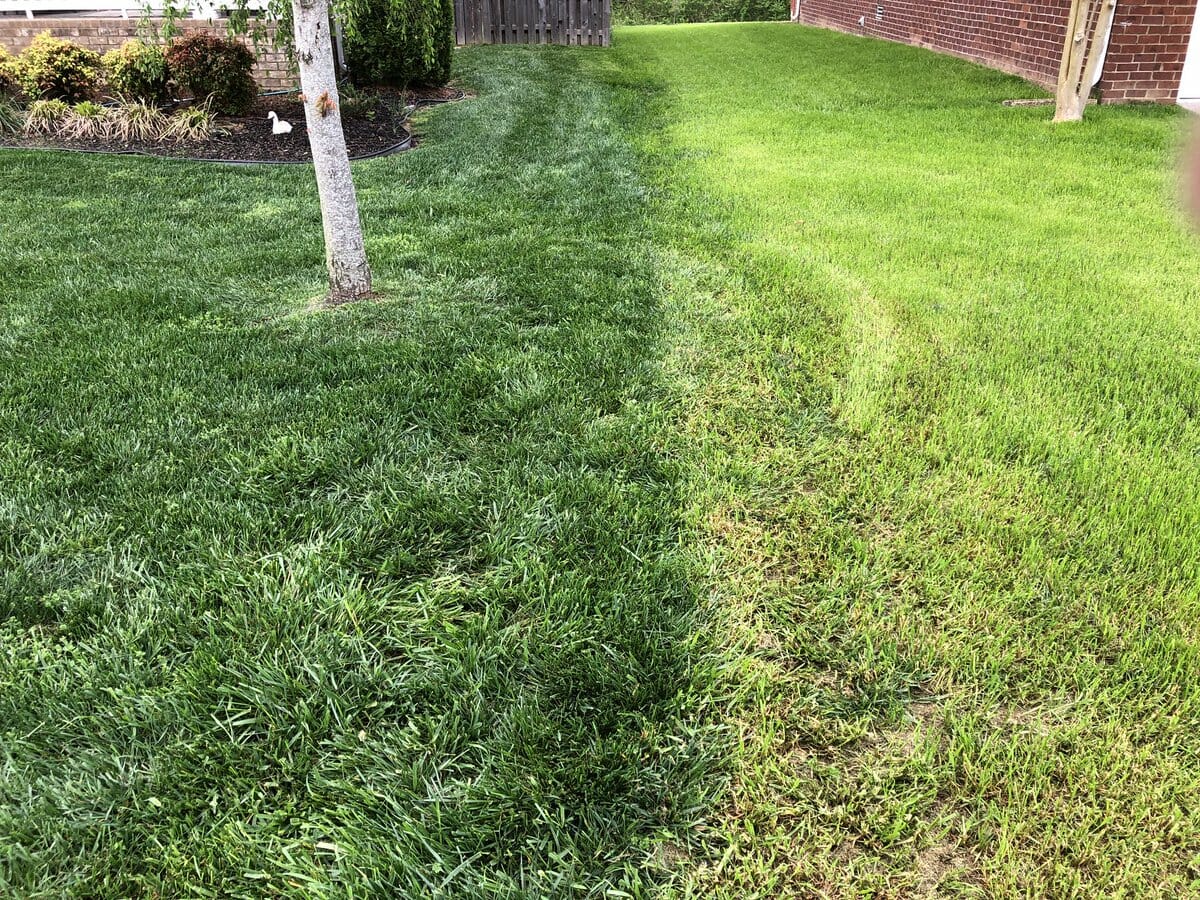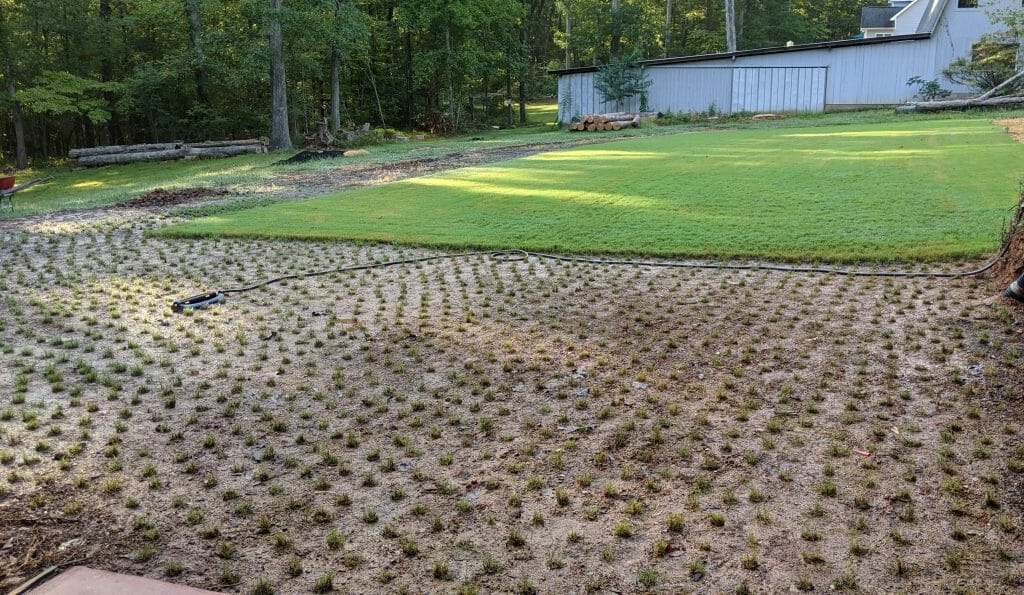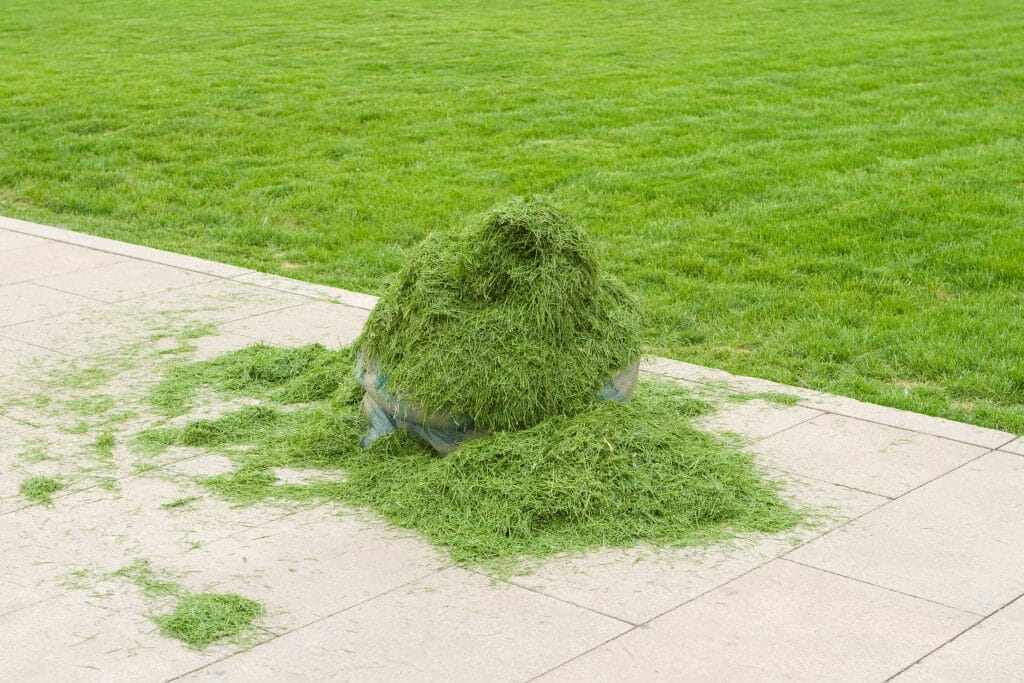
Milorganite takes approximately 1 week to take effect, depending on the conditions. This slow-release organic fertilizer shows results in week 2 or 3 and stays effective for up to 10 weeks.
This US-produced fertilizer is a great alternative to many synthetic fertilizers that have shorter effects. However, it does need specific conditions to work well.
Read on to learn more about Milorganite and how long it takes to see the results on your lawn.
What Is Milorganite?
Milorganite is an organic fertilizer made from recycled sewage. It is produced by the Milwaukee Metropolitan Sewerage District and has been effectively used as a fertilizer for decades.
The collected wastewater is filtered to remove all the debris. Then, microbes and oxygen are added which will feed on the organic matter in the wastewater.
The waste products begin to separate from ‘clean water’ as the microbes create clumps that fall to the bottom. At this point it is easy to separate the gray water from the organic matter.
The organic matter is then further processed into what is finally sold as fertilizer. Milorganite contains high levels of nitrogen, phosphorus and iron and acts as a slow release fertilizer.
What Milorganite Does to Lawns and How Long It Takes to Work on Your Lawn
Milorganite contains high levels of nitrogen which is an essential nutrient for plant growth. It also contains iron which gives your lawn a lush green color.
Another advantage of using Milorganite over synthetic fertilizers is that it is safer for both humans and the environment. Since it is made of natural materials, it won’t do damage as runoff.
Its natural composition makes Milorganite a slow-release fertilizer. This means that nutrients are gradually absorbed by the soil, making it effective over a longer period of time.
Being a slow release fertilizer, it does take slightly longer to see the initial results. You should begin noticing a positive change in your lawn grass after the first week with optimal growth and health in the second or third week.

How to Apply Milorganite
How to apply milorganite depends on the specific soil needs and the grass species you are trying to grow on your lawn. It is important to do a soil test to check the soil needs and research the growing season for the specific grass type before buying milorganite.
Both warm climate and cool climate grasses should be fertilized four times a year with milorganite but the exact timing differs. Do a little research on your grass type to find out when they need the extra nutrients the most.
These are steps for applying milorganite.
- Check the soil temperature. The ideal soil temperature is between 55 – 85 degrees Fahrenheit.
- Calculate how much fertilizer is needed for the size of your lawn and the soil needs.
- Mow your lawn so that it is easier for the fertilizer to become absorbed by the soil.
- Evenly spread the milorganite over the lawn using a rotary spreader. It is best to follow a grid pattern to not miss any spots.
- Water your lawn so that there is an inch of water. Make sure to wash off any fertilizer sitting on top of the blades as this can cause your lawn to burn.
A light rain shower after you have applied milorganite is not a problem. In fact, the extra moisture may help the absorption rate.
DON’T MISS: What’s the difference between ironite and milorganite?

Can You Put Too Much Milorganite Down?
When it comes to nurturing your lawn, the question of “How much is too much?” often arises, especially with products like Milorganite.
The short answer is yes, it is possible to overapply Milorganite, as with any fertilizer, but the consequences aren’t the end of the world and are easily fixed.
Milorganite is known for its slow-release formula, a stark contrast to the fast-acting synthetic fertilizers. This means that while the temptation to add an extra scoop for a quicker green-up might be strong, patience is key. Milorganite releases its nutrients gradually over 8–10 weeks, ensuring your lawn gets a steady supply of nitrogen and iron. On the other hand, synthetic fertilizers might give you a rapid green lawn but only for a fleeting moment.
The risks of over-fertilizing go beyond just wasted product. Excessive nitrogen can weaken your grass by promoting leaf growth at the expense of the roots. And in the bigger picture, surplus nutrients can wash away, leading to environmental pollution, especially with quick-release fertilizers.
But here’s where Milorganite shines. Even if you accidentally spill an entire bag on your lawn, it’s unlikely to cause any damage. Just scoop up what you can, spread out the rest, and let it be. Milorganite won’t burn your grass.
So, while a little care is always good, with Milorganite, a minor mistake won’t spell disaster for your lawn. Just remember, good things come to those who wait, and a lush, green lawn is no exception.
Milorganite Results
Here’s a few milorganite results that will hopefully inspire you!
View this post on Instagram
View this post on Instagram
Frequently Asked Questions:
Can You Put Too Much Milorganite On Your Lawn?
Yes, it is possible to spread too much milorganite on your lawn. Too much milorganite means too much nitrogen in the soil which causes grass to turn yellow.
On the other hand, too little milorganite also causes discoloration. So, always follow the instructions on the correct milorganite levels for your specific lawn.
When Should You Put Down Milorganite?
Put down milorganite when the soil temperature is between 55 – 85 degrees Fahrenheit and before a rain shower. This temperature and moisture level helps the soil absorb the nutrients in milorganite.
Milorganite should be applied 4 times a year since it remains effective for up to 10 weeks. Research when it is the best time to apply milorganite for your specific grass type.
How Long Does Milorganite Smell Last?
Like most fertilizers, milorganite has a distinct unpleasant smell. Fortunately, the smell will fade away in 1 – 2 weeks.
The smell is caused by the organic matter in the fertilizer. Hot and humid conditions may make the smell worse.
Summary
Milorganite stands out in the world of lawn care as a top-tier, US-produced organic fertilizer, renowned for its slow-release properties and effectiveness in nourishing lawns. When applied, it begins to work its magic within a week, with visible transformations into lusher, greener grass emerging within 2 to 3 weeks.
This gradual improvement is a testament to its nurturing approach, feeding your lawn steadily and healthily over time.
However, to maximize the benefits of Milorganite, it’s crucial to apply it under optimal soil conditions. Factors like moisture, temperature, and soil pH can significantly influence how well Milorganite interacts with your lawn.
Ensuring the soil is receptive not only enhances absorption but also ensures that each granule of Milorganite is used to its full potential, promoting robust growth and vibrant color.
Milorganite is a reliable and effective choice for those seeking a healthy, green lawn. Its organic, slow-release nature makes it a safe, environmentally friendly option that delivers noticeable results.
By paying attention to soil conditions and following recommended application rates, you can enjoy a beautifully maintained lawn that stands as a testament to the power of patience and proper care.


